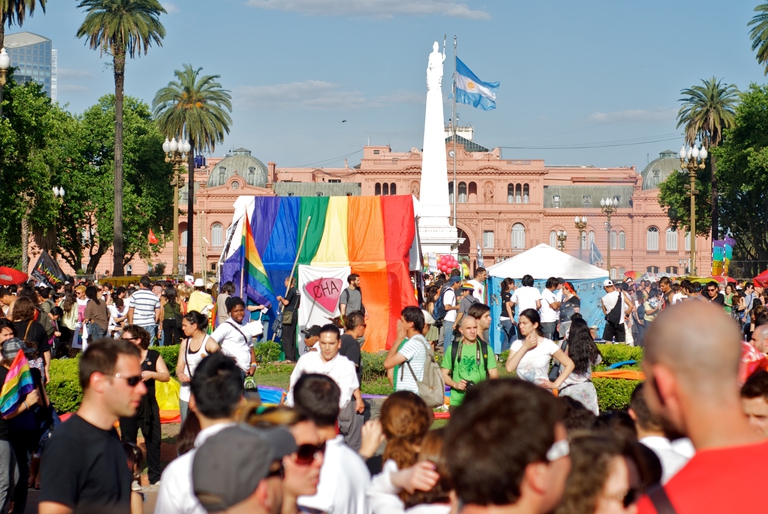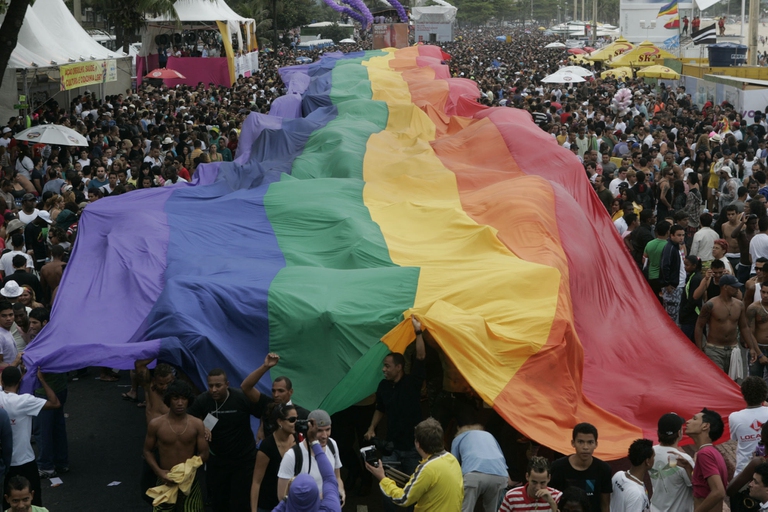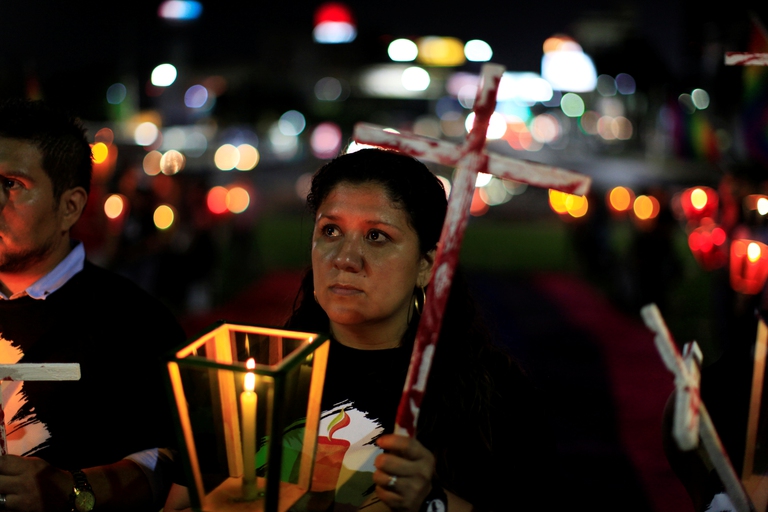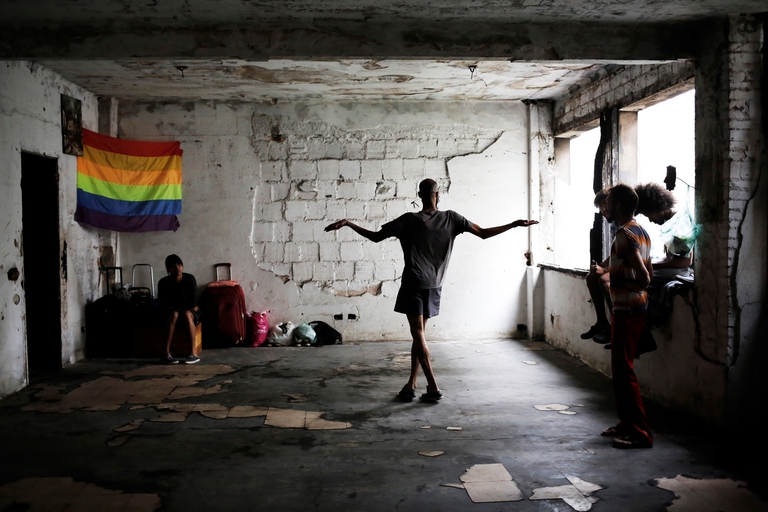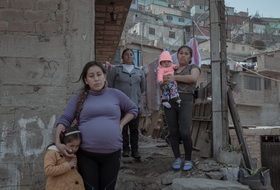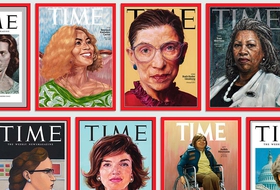
One in three women have suffered physical or sexual violence. With contributions from Europe, Africa, Asia and Latin America, we look at how this shadow pandemic affects every corner of the world.
The legislative landscape in the area of LGBT rights in Latin America began to evolve in the early 2000s. Whereas in 1999 almost half the region still criminalised homosexuality, the legalisation of same-sex marriages in Spain in 2005 incentivised its former colonies (and not only) to refresh their policies on the matter. Since then five Latin American countries – Uruguay, French
The legislative landscape in the area of LGBT rights in Latin America began to evolve in the early 2000s. Whereas in 1999 almost half the region still criminalised homosexuality, the legalisation of same-sex marriages in Spain in 2005 incentivised its former colonies (and not only) to refresh their policies on the matter.
Since then five Latin American countries – Uruguay, French Guyana, Colombia, Brazil and Argentina – have fully legalised gay marriages and adoptions, Colombia being the most recent case with legislation passing in April 2016. Additionally, Mexico has also been gradually recognising LGBT rights: same-sex couples can marry and adopt children in Mexico City and six out of 31 states. Chile and Ecuador have introduced civil union laws that grants LGBT couples similar legal protections as marriages.
On the other side of the legislative spectrum, since Belize revoked its anti-sodomy laws in August 2016 the only country in Latin America that still penalises homosexual relations is Guyana, where “buggery” (a term almost synonymous with sodomy) calls for life imprisonment, though the law isn’t enforced. Last year the country’s Supreme Court challenged Guyana’s ban on cross-dressing except in cases of “improper purposes”.
Yet despite numerous advances, Latin America doesn’t have a unitary voice on LGBT issues and inspiring breakthroughs in the region are insufficient to overshadow the actual size of marginalisation and persecution. Alone it was scene to 78 per cent of murders of transgender and gender-diverse people documented worldwide between 2008 and 2014, according to the United Nations. The Inter-American Commission of Human Rights points to almost 600 hate-motivated homicides of LGBT people in the member states within a one-year timeframe. A comprehensive 2015 UN report also cites an alarming number of fatal assaults in Brazil, which reported 310 murders with homophobic or transphobic motives in 2012.
Furthermore, it should be emphasised that all data is believed to downplay the actual scale of discrimination as many crimes aren’t reported due to fear of retaliation or they’re simply not classified as hate-driven, specialists indicate. There is an “alarming pattern of grotesque homicides … and broad impunity for their perpetration, sometimes with the suspected complicity of investigative authorities,” UN Special Rapporteur on extrajudicial, summary or arbitrary executions Christof Heyns pointed out in 2014.
In addition, opinion polls point to the fact that Latin American reforms don’t necessarily resonate on the local level. For instance nearly three quarters of El Salvador’s society, a little over half in Bolivia and a little less than a half in Venezuela believe that homosexuality is morally unacceptable, Pew polls show, though all three countries have undertaken some judicial measures to protect the LGBT community.
Widespread homophobia in Latin America is attributable partly to the predominant machista model of masculinity that puts pressure on men to build their identity around images of virility and encourages behaviours such as alcoholism, domestic violence, disregard for women’s rights and family abandonment. Homophobic hate speech is frequently used to reaffirm masculinity. “It will be a long and difficult path until Latin America liberates from those deeply rooted defects that are machismo and homophobia – two sides of the same coin,” wrote Peruvian Nobel-prize winning author Mario Vargas Llosa in the wake of the murder of Daniel Zamudio, a Chilean student fatally assaulted by a neo-Nazi group in 2012.
Interestingly, there is a tendency to perceive LGBT women in a slightly different light than men, which is reflected in the legislation of some Caribbean countries that haven’t legalised homosexuality. Jamaica criminalises only male same-sex intercourse but the law doesn’t take an explicit stance on females. “Any male person who, in public or private, commits, or is a party to the commission of … any act of gross indecency with another male person, shall be guilty of a misdemeanor”, reads the 1864 Offences Against Person Act, commonly known as the country’s buggery law.
Numerous initiatives to combat LGBT-targeted discrimination and violence as well as efforts to judicially include LGBT communities have put Latin America on the map of human rights activists and scholars who consider the region an example to follow. And, indeed, those undoubtedly positive developments should be promoted internationally. There is, however, a wide gap between the political willingness to push for equality and the extent to which it meets with public approval. Rather than prematurely praising Latin America’s gay-friendly image we should focus on, and work to change, what lies beneath.
Siamo anche su WhatsApp. Segui il canale ufficiale LifeGate per restare aggiornata, aggiornato sulle ultime notizie e sulle nostre attività.
![]()
Quest'opera è distribuita con Licenza Creative Commons Attribuzione - Non commerciale - Non opere derivate 4.0 Internazionale.
One in three women have suffered physical or sexual violence. With contributions from Europe, Africa, Asia and Latin America, we look at how this shadow pandemic affects every corner of the world.
The Istanbul Convention against gender-based and domestic violence marks its tenth anniversary. We look at what it is, who its signatories are, and what the future might hold.
European Commission President Ursula von der Leyen reminded us of the gravity of violence against women around the world, and of the Istanbul Convention’s utmost importance.
President Erdoğan has pulled Turkey out of the Istanbul Convention, key in the fight against gender violence, claiming that it favours the LGBT community rather than family values.
Violence against women in Peru has increased as a result of Covid-19 lockdowns. 14,912 people were reported missing from January to November 2020, more than half of them minors and 64 per cent women. People have been confined to their homes for months, many forced to endure poor physical, economic and social conditions. A situation that
Joys Estefani Qqueccaño Huamani, 24, disappeared from her rural community in Peru on 9 October. Her family began looking for her independently of the authorities and despite the resistance of relatives of Joys Estefani’s ex-partner Arturo Ccana Condori, 32, charged with committing violence against her on 28 September, eleven days before Joys Estefani disappeared. Photos
Costa Rica celebrated its first same-sex marriage when two women, Alexandra Quiros and Dunia Araya, celebrated their wedding: an “extraordinary moment”.
The pandemic and its restrictions are affecting everyone, without exceptions. However factors like housing, income inequalities, gender, access to technology and working conditions are influencing how people experience the health crisis.
Time magazine’s 100 Women of the Year project sheds light on influential women’s stories, from Amelia Earhart to Greta Thunberg. A selection of some of the greats for International Women’s Day.
